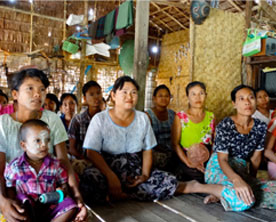On 23rd April 2015, World Bank Group announced that Myanmar is joining the World Bank’s full partnership framework for the first time in 30 years. About three million pregnant women and children are expected to get bet- ter health services and six million Myanmar citizens will have better access to electricity and other basic services in the next three years provided by the World Bank. The 2015-17 Country Partnership Framework (CPF) endorsed by the World Bank Group’s Board of Executive Directors will support up to $1.6 billion in credits, loans and grants together with technical assistance.
The International Finance Corporation
(IFC), the private sector arm of the World Bank Group will also provide Myanmar up to $1 billion in investments and $20 mil- lion in technical assistance. Private lenders and investors in Myanmar will also benefit from political risk insurance offered by the Bank’s Multilateral Investment Guarantee Agency (MIGA). The CPF is the World Bank Group’s first full strategic framework for Myanmar since 1984. The CPF comes and helps Myanmar with its economy shift- ing from state-directed to market-oriented during the country’s transition from military rule to democratic governance.
“The new Country Partnership Framework for Myanmar is based on priorities developed in close consultation and engagement with stakeholders in Myanmar,” said Ul- rich Zachau, World Bank Country Director for Myanmar. “The Framework focuses on reducing rural poverty, providing basic services, and stimulating the private sector in an inclusive manner, so that especially the poor and vulnerable share in the benefits of reform. We look forward to working in partnership with the government, investors and civil society groups for the prosperity of the people of Myanmar.”
“Myanmar’s priority is to advance development and cut poverty in our country,” said Union Minister for the ministry of Finance, U Win Shein. “Financing and innovative ideas from the World Bank Group can help create jobs, end poverty by 2030 and build Myanmar through growth that reaches everyone in Myanmar, especially the poorest people.” Mainly, the CPF will help to reduce poverty in rural areas where more than 75 percent of Myanmar’s poor live










